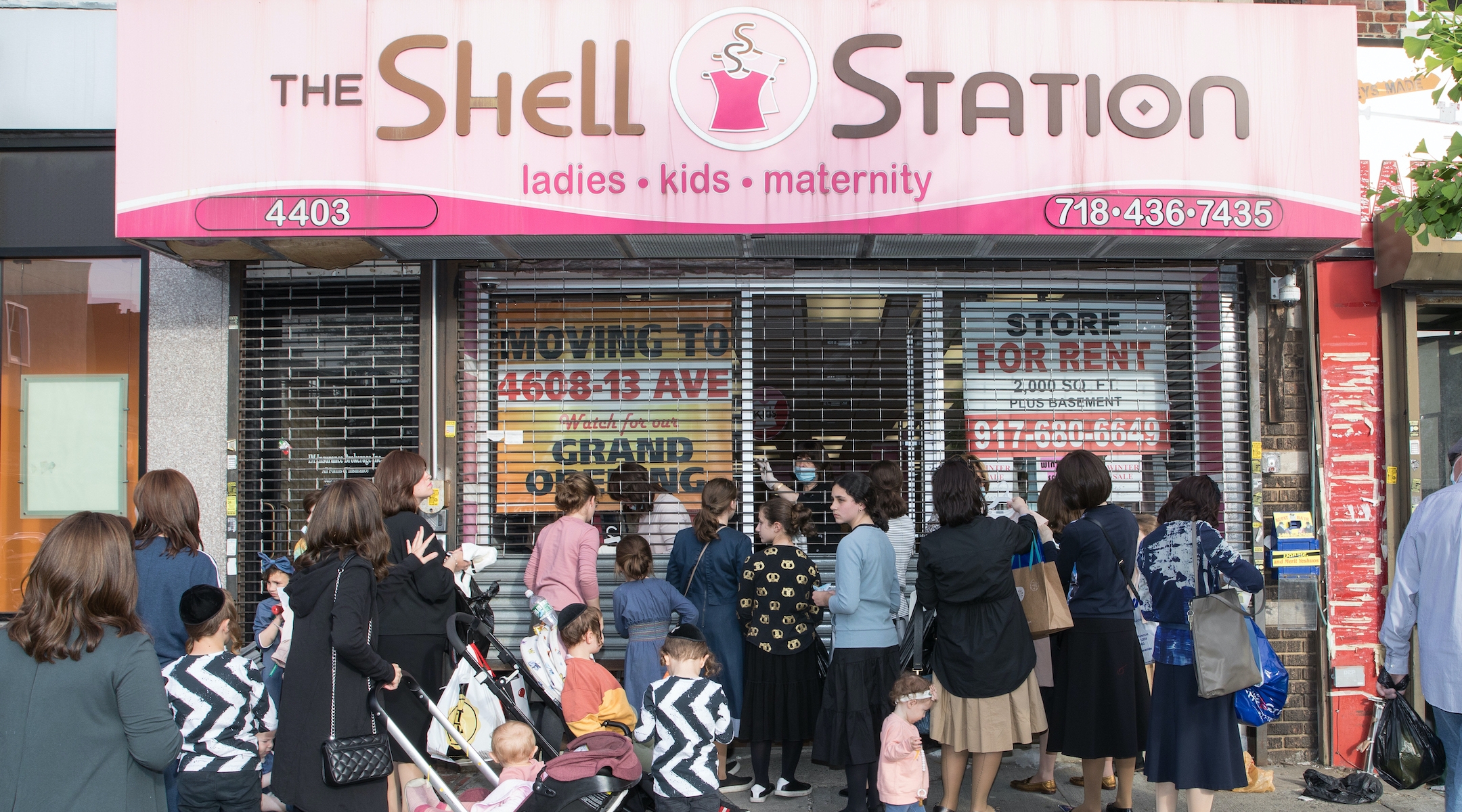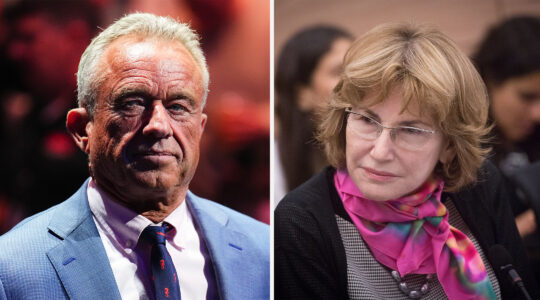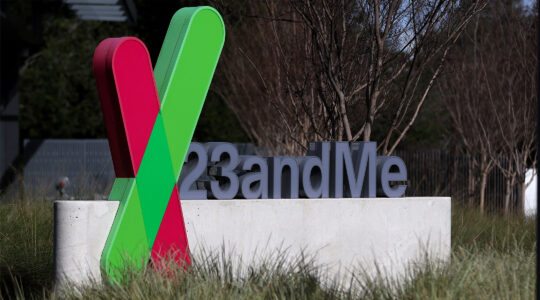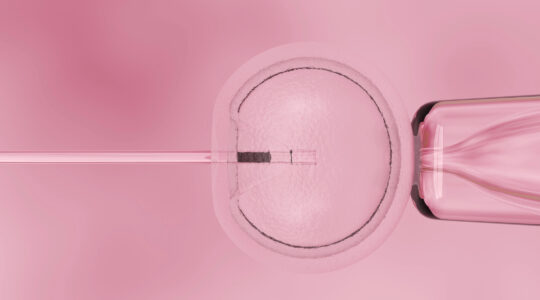(JTA) – The front page of the June 26 issue of Der Yid, one of the most widely circulated Yiddish newspapers among New York’s Hasidic Orthodox communities, made the point loud and clear.
“And so it was after the plague.”
Those words, lifted from a verse in the Torah and printed alongside photos of large gatherings of unmasked Hasidic men, had a clear implication: After months of funerals and fear, the modern-day pandemic had passed and the time had come to gather again.
That sentiment appears to be guiding life in Brooklyn’s Hasidic communities, where nearly four months after the virus first arrived, synagogues and camps are open, yeshivas resumed classes before closing for summer break and wedding halls are packed again, sometimes in violation of city and state rules designed to slow the spread of disease.
Continued gatherings of Hasidic Jews drew criticism from New York City Mayor Bill de Blasio and others in the city this spring who said the communities were not doing their part to stop the spread of the virus. But inside the communities, the overwhelming perception is that most people have had the virus and may now be immune.
“That’s the feeling, that they’ve had it, everybody they know has had it, and the people they know who haven’t had it have some kind of immunity that we just don’t understand yet,” one Williamsburg health administrator said.
If community members’ assumptions are correct — and that’s a big if, as much is not yet known about whether and how COVID-19 infections provide later immunity — Brooklyn’s Orthodox neighborhoods would stand alone. Even in the few places such as Sweden that have explicitly pursued a strategy of trying to reach herd immunity, antibody tests show that most of the population there has not yet been infected.
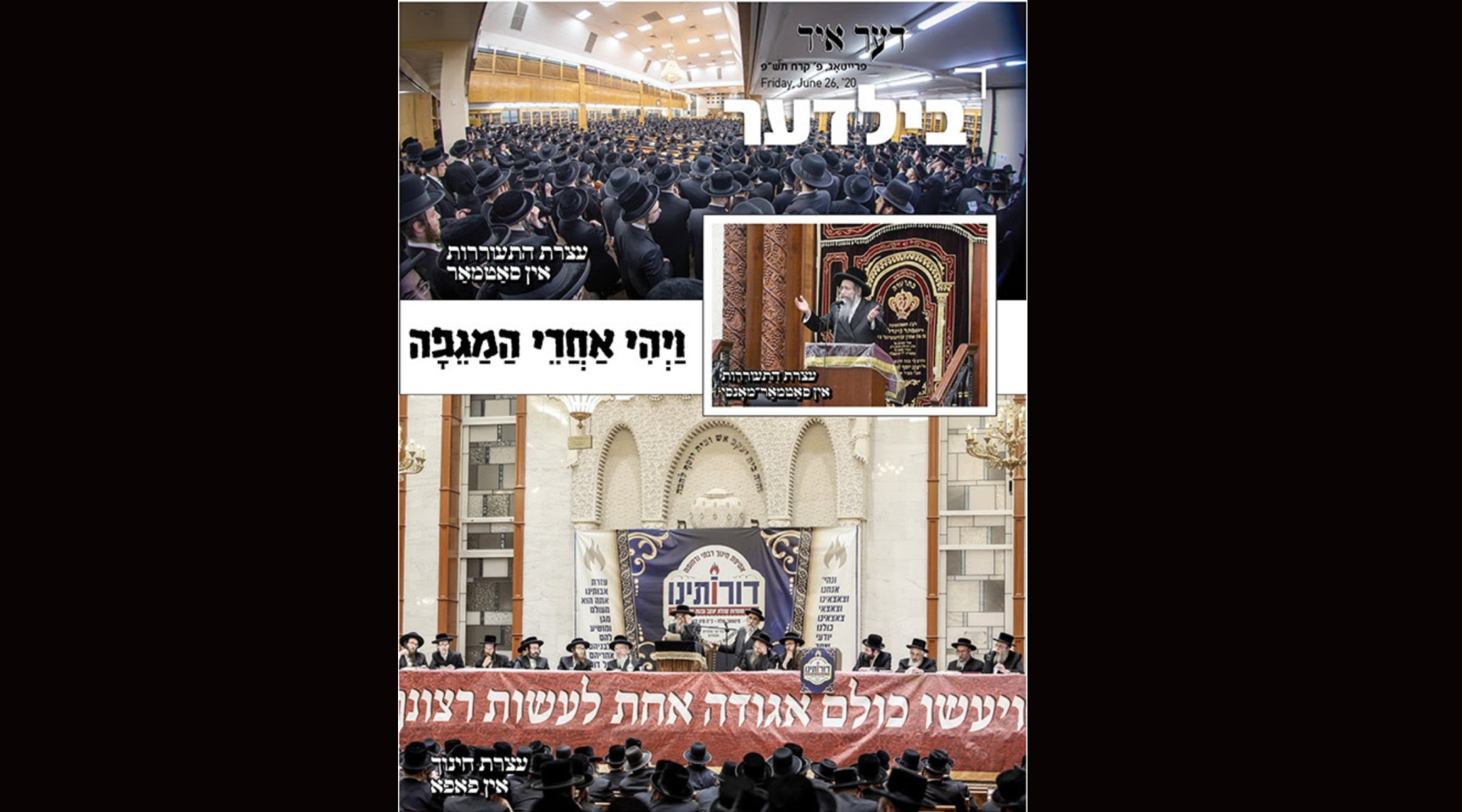
The June 26 cover of Der Yid, a popular Yiddish newspaper, implied that the threat of the pandemic had passed. (Screenshot from Der Yid)
But a confluence of bad timing, large families in cramped apartments and a highly social way of life that can’t be replaced virtually gave residents of Brooklyn’s Orthodox neighborhoods little opportunity to try to prevent a major outbreak. Now local health care providers and administrators say surveys and tests suggest that as many as 70% of the community has had COVID-19 and recovered, and that new cases have slowed or stopped entirely in their neighborhoods, despite a near total return to normal behavior, including large gatherings.
As case numbers skyrocket in many parts of the United States, the grim experiment that unfolded in Brooklyn’s Hasidic communities offers a compelling case study for those trying to understand this virus — and the costs that come with experiencing its proliferation.
“I have a sad feeling that we can go out and about because we were lax,” said Yosef Rapaport, a 65-year-old media consultant in Borough Park whose brother and a brother-in-law were among the hundreds of community members to die this spring.
After being extremely cautious for months, even Rapaport admits that the lack of new cases has put him somewhat more at ease. But the way the community got there is something he wouldn’t repeat if given the chance.
“It’s not something that makes me happy,” he said. “To benefit from the bad is something that makes me sad. But I can’t have complaints that people live in the reality that exists.”
“Yes, people are going to die, but they don’t have better options.”
The window to “flatten the curve,” as public health officials exhorted the public to do in the pandemic’s early days, in the tight-knit Orthodox communities of Brooklyn may have been over long before government officials began advising New York City residents to begin social distancing and wearing masks.
That’s because a majority of the cases in the Orthodox community, many believe, came in the days leading up to and on the Jewish holiday of Purim on March 9 and 10. While the mayor and governor were still days away from shutting down schools and businesses, parties and prayer services on Purim seeded the epidemic in Crown Heights, Borough Park and other neighborhoods with large Orthodox communities.
“Purim came at a really bad time in the outbreak,” Eili Klein, a professor of emergency medicine at the Johns Hopkins Medical School in Baltimore, told the Jewish Telegraphic Agency in April. “The virus was just starting to spread in the community, and congregations of people in close proximity might have allowed the small number of infected people to spread it more widely than they might have otherwise.”
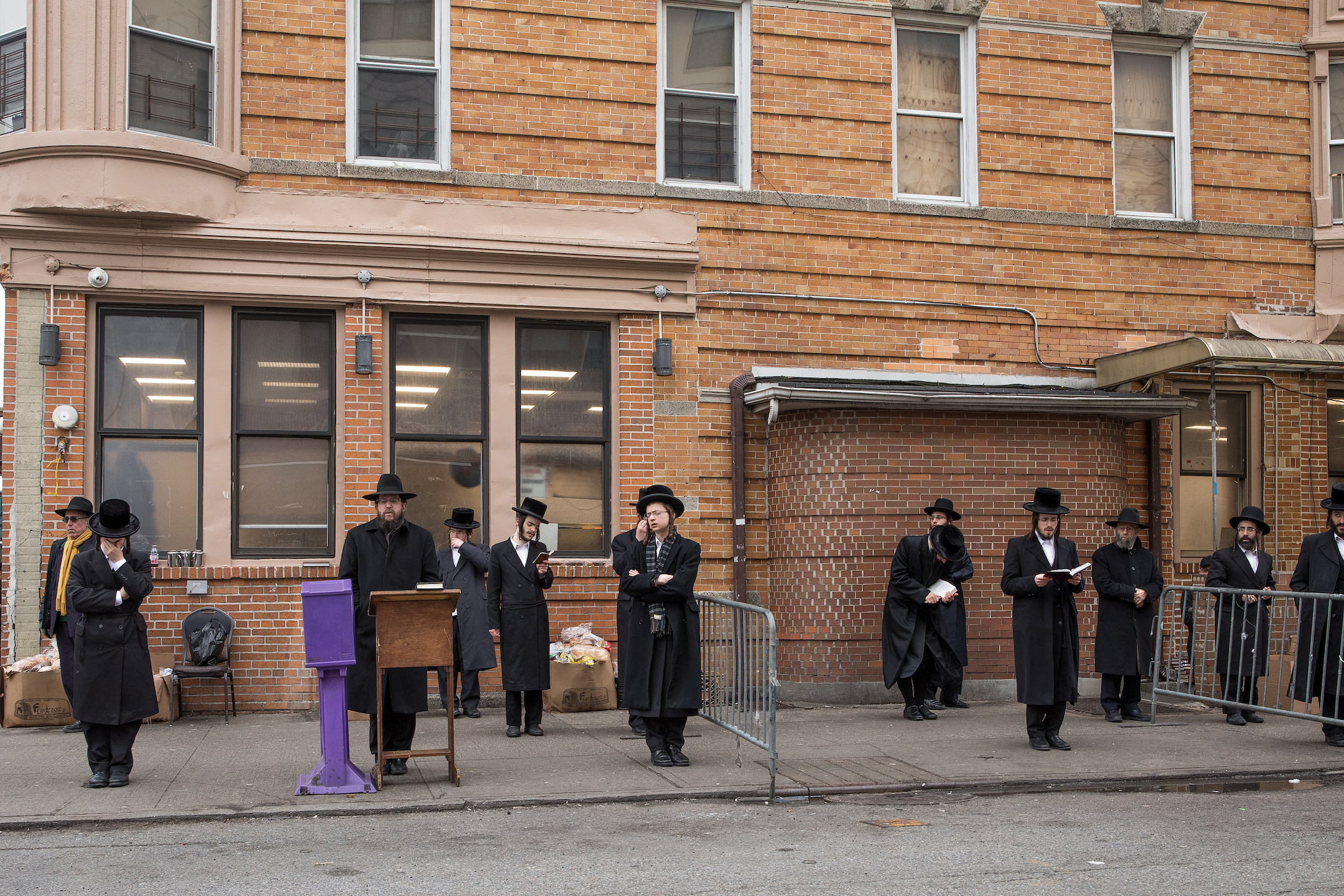
Hasidic men pray outside at a socially distanced service in Borough Park, March 30, 2020. (Avi Kaye)
A week later there were just over 800 confirmed coronavirus cases across New York City. More than 100 had come from just one Borough Park clinic serving Orthodox Jews.
That was the beginning. Over the coming weeks, the communities were ravaged by the disease. Death notices were posted hourly on Orthodox news sites. Burial societies worked continuously and ran out of the shrouds required to lay the dead to rest. Funeral homes recruited people with SUVs to transport bodies they lacked the capacity to handle.
And then, just as abruptly as it began, the pace slowed. One large burial society in Brooklyn said the volume of dead bodies needing preparation for burial dropped off two weeks after Passover, which ended in mid-April. They had prepared 700 bodies for burial during a period in which they would normally have prepared 100.
Widespread efforts toward social distancing began to wane in some Hasidic neighborhoods, especially Williamsburg and Borough Park. After thousands of people crowded Williamsburg streets in late April for the funeral of a rabbi there who had died of COVID-19, de Blasio called out “the Jewish community” for failing to follow social distancing guidelines. Two days later, another funeral in Borough Park drew a large crowd that city police officers dispersed. Some yeshivas began reopening illegally, with classes held in basements or teachers’ homes.
The abandonment of social distancing may have seemed cavalier, but some community members say it was inevitable.
“They can’t socially distance because they can’t be locked up, because they chose a way of life in which it’s impossible to exist locked up,” one Hasidic man in Borough Park said about his community, noting that it’s not uncommon for a Hasidic family of 10 or 12 to live in a two- or three-bedroom apartment. “Yes, people are going to die, but they don’t have better options.”
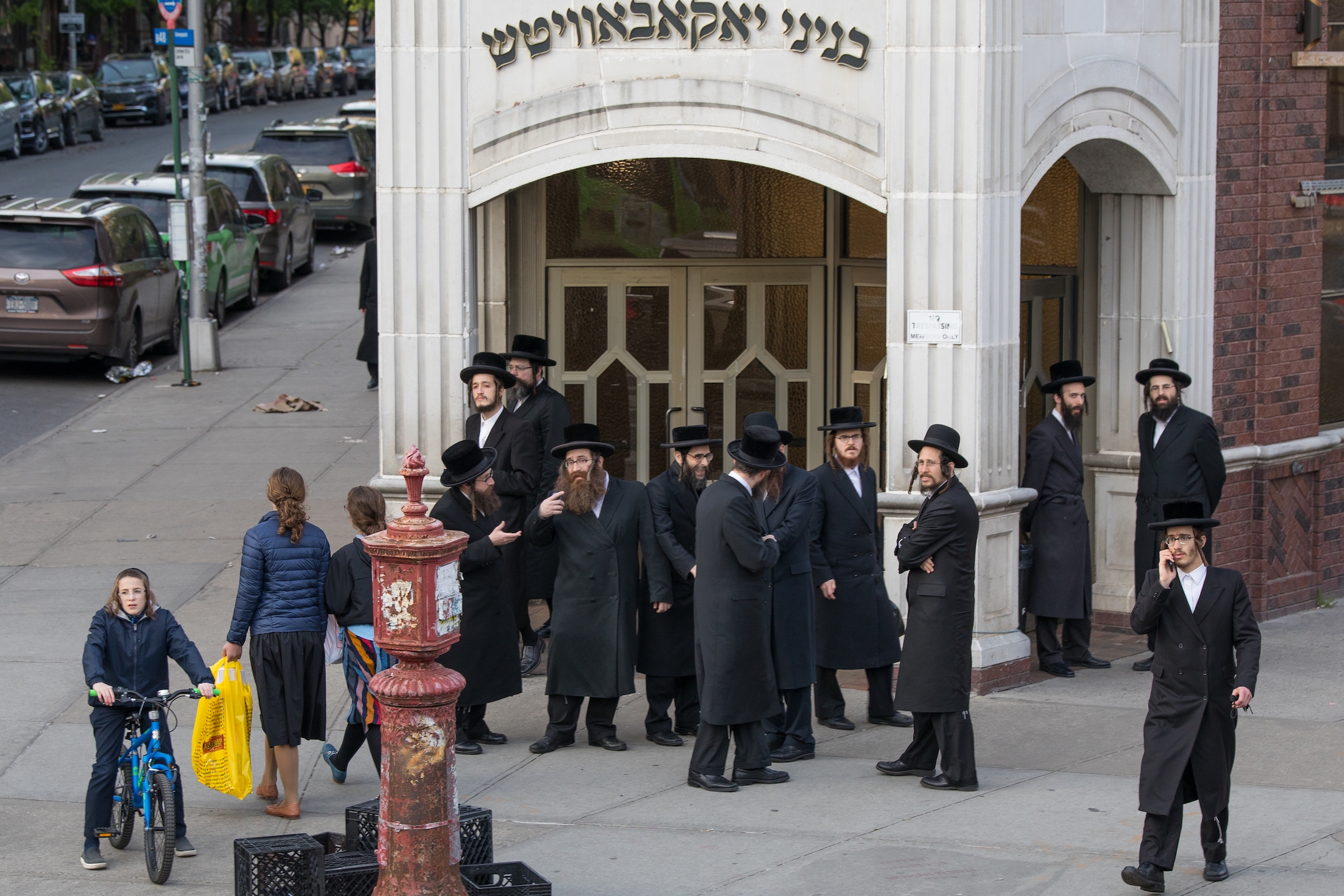
Men gathering outside a synagogue in the Williamsburg neighborhood of Brooklyn, May 12, 2020. (Avi Kaye)
No spike in cases seemed to follow in those neighborhoods, according to health professionals there, reinforcing the sense for many that the danger had passed.
Meanwhile, a group of local doctors working to track COVID cases in the Hasidic community in Crown Heights, where distancing guidelines appeared to be more widely adhered to for a longer period of time, found that local newly symptomatic cases peaked on March 15. That was just five days after Purim and weeks before the city’s new cases peaked, well into widespread distancing.
The doctors began working together in March under the auspices of the Gedaliah Society, a professional development group that functioned in relative obscurity before the pandemic but quickly became an authority in the community’s efforts to respond to the pandemic.
Using a Google form disseminated on a blog and through social media, the doctors asked local residents to self-report their symptoms, when the symptoms began and other information that would help the doctors understand how far the virus had spread.
More than 3,500 people responded quickly to a subsequent survey asking respondents for antibody test results, leading the doctors to estimate that a majority of community members could have antibodies. They estimated that slightly more than 70% of the community’s adults between the ages of 25 and 65 had “been sick with COVID-like symptoms.” Among adults over age 65, they estimated, 55% had been sick.
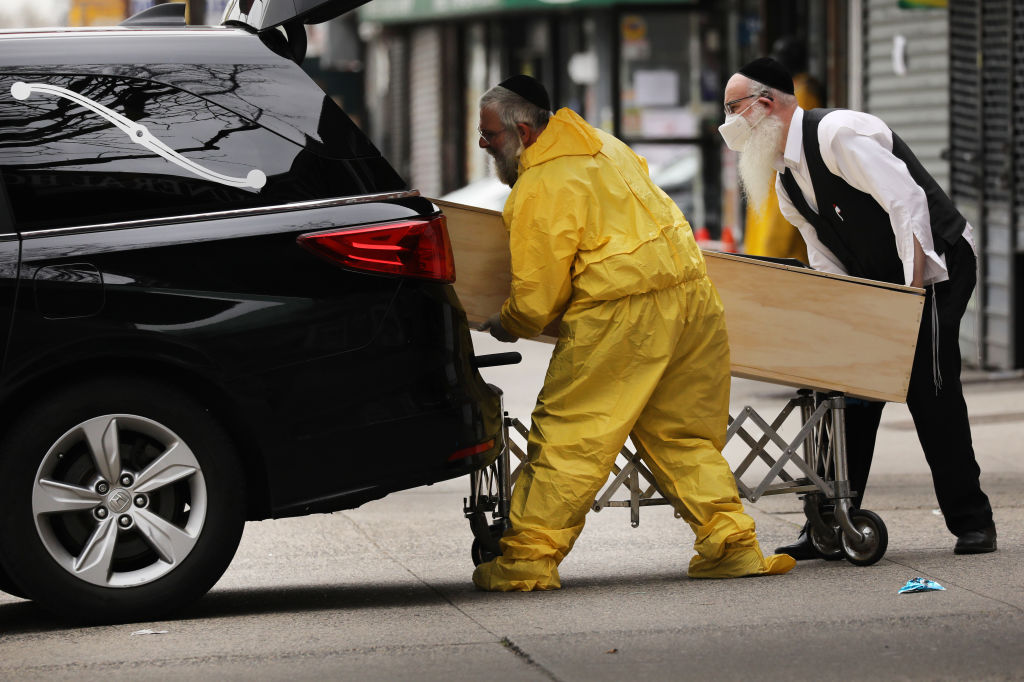
Orthodox Jewish men move a wooden casket from a hearse at a funeral home in Borough Park, April 5, 2020. (Spencer Platt/Getty Images)
Without random testing, it’s impossible to know the true penetration of the virus in Crown Heights. But the doctors’ estimates would put the community within the range that scientists say is likely to confer herd immunity, meaning enough of the community has recovered from a disease or been inoculated by a vaccine to significantly mitigate or stop the spread of the disease within the community.
That’s exactly what the doctors said they were seeing.
“In our little island of Crown Heights, we have had relatively few new cases over the past few weeks,” they wrote on May 11.
The situation had improved even more by their update on June 5, when they reported no new cases in the community.
“Presumably, this is due to the large percentage of Crown Heights that has been already affected, conferring a substantial degree of immunity to us as a community,” the doctors wrote on June 5.
In late June, they wrote again that they knew of no new local cases.
“The numbers are high.”
The Crown Heights survey looked at just one neighborhood, but Borough Park and Williamsburg, two other neighborhoods with large Hasidic populations, appear to have had a similar experience.
Overall, there is evidence that many people across New York City have had COVID-19 already. In May, Gov. Andrew Cuomo said an antibody study had shown a citywide positive rate of 19.9% and a positive rate of 29% in Brooklyn. A study posted in early June of over 28,000 antibody test results in the New York City area showed that 44% of respondents who walked into clinics for antibody testing were found to have them. (That study has not yet gone through the peer review process.)
But none of those studies offers a picture of the situation in Hasidic communities, which are relatively insular. Even the city’s data, broken down by Zip code, is an imperfect measure for communities that are spread over multiple Zip codes that include many non-Jews.
“What’s more helpful are what we’re getting from the community health centers where the Jewish people are going to be tested for their antibodies,” said Blimi Marcus, a nurse practitioner living in Borough Park who has been an outspoken advocate within the Orthodox community for staying home to stop the spread of the virus. “And the numbers are high.”
Administrators and providers from four health care clinics with locations in Brooklyn’s Hasidic neighborhoods told JTA that they had seen antibody positive rates that were far higher than the citywide data.
“In the first weeks when they first started to offer it, positive rates hovered in the 55-60% range,” Yosef Hershkop, regional manager at Kamin Health, said of the tests done at his clinic.
Kamin Health has locations in Crown Heights, Borough Park, Williamsburg and Queens and performed thousands of antibody tests across all four locations. Hershkop said the percentage of antibody tests that came back positive had dropped in recent weeks but was still above 50%.
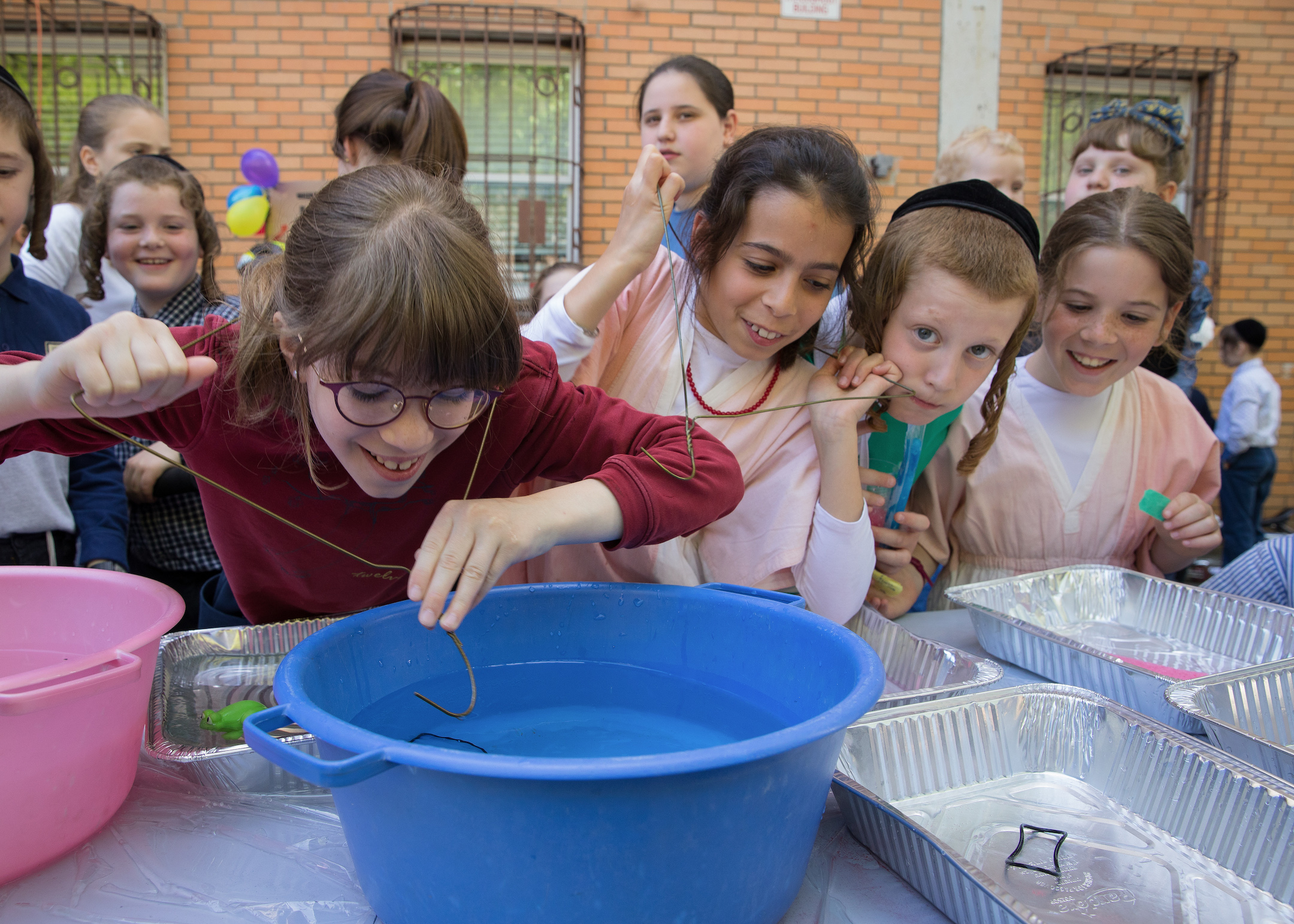
Hasidic children play games at an outdoor carnival in the Williamsburg neighborhood, May 2020. (Avi Kaye)
Gary Schlesinger, the CEO of Parcare, a chain of health care clinics, said his clinics in Williamsburg and Borough Park had seen antibody positive rates of 70-74%.
Nosson Hayum, a nurse practitioner at the Perfect Health Medical Center in Borough Park, said early results showed that teenage boys in the community had the highest rates of positive antibody test results.
A health care administrator at a large Williamsburg clinic that serves mostly Hasidic patients said she had seen antibody positive results of around 40%. But that number rose to 75% if you looked at males aged 18-34.
“It makes sense if you look at the population we’re serving,” the Williamsburg administrator said, noting that men in Hasidic communities have the most active lives outside the home, attending synagogue and often studying in yeshiva.
An especially high infection rate among young men is just one piece of the community’s antibodies picture. Hasidic communities tend to be younger on average, with couples often having as many as eight children or more. According to the city’s most recent population data, just over 50% of Borough Park’s population is 24 years old or younger and 14% are under 6. Mounting evidence suggests that young children are unlikely to be sources of transmission for the coronavirus, meaning that Orthodox communities essentially have a disproportionately high share of dead ends for the virus, or at least a larger proportion of people who are at lower risk of becoming seriously ill.
Schlesinger, who is not a doctor, doesn’t claim to know why the community has seen so few cases despite synagogues and schools reopening. But if you assume that antibodies confer immunity, he said, then the numbers point to herd immunity.
“If you’re talking in the 70s and if herd immunity means something, then that’s what it is,” he said.
But Dr. Aaron Glatt, the chief of infectious diseases and hospital epidemiologist at Mount Sinai South Nassau on Long Island and an Orthodox rabbi, questioned whether any data from local clinics or groups like the Gedaliah Society in Crown Heights could show that a community had achieved herd immunity.
“Unless they’re getting a random sampling of the community, statistically it’s worth zero,” he said.
Still, several epidemiologists and doctors studying the novel coronavirus acknowledged that it would be possible for Orthodox communities to have especially high rates of positive antibodies and the protection they may provide.
“I think there are likely segments, enclaves, whatever, where a large number of people in the Orthodox community have been infected and recovered and thus a major outbreak among that group is unlikely,” said Dr. Michael Joyner, an anesthesiologist at the Mayo Clinic who is leading a national study on the effects of convalescent plasma in treating COVID patients. Young Orthodox men were among the first participants in the study and have made up a large percentage of plasma donors.
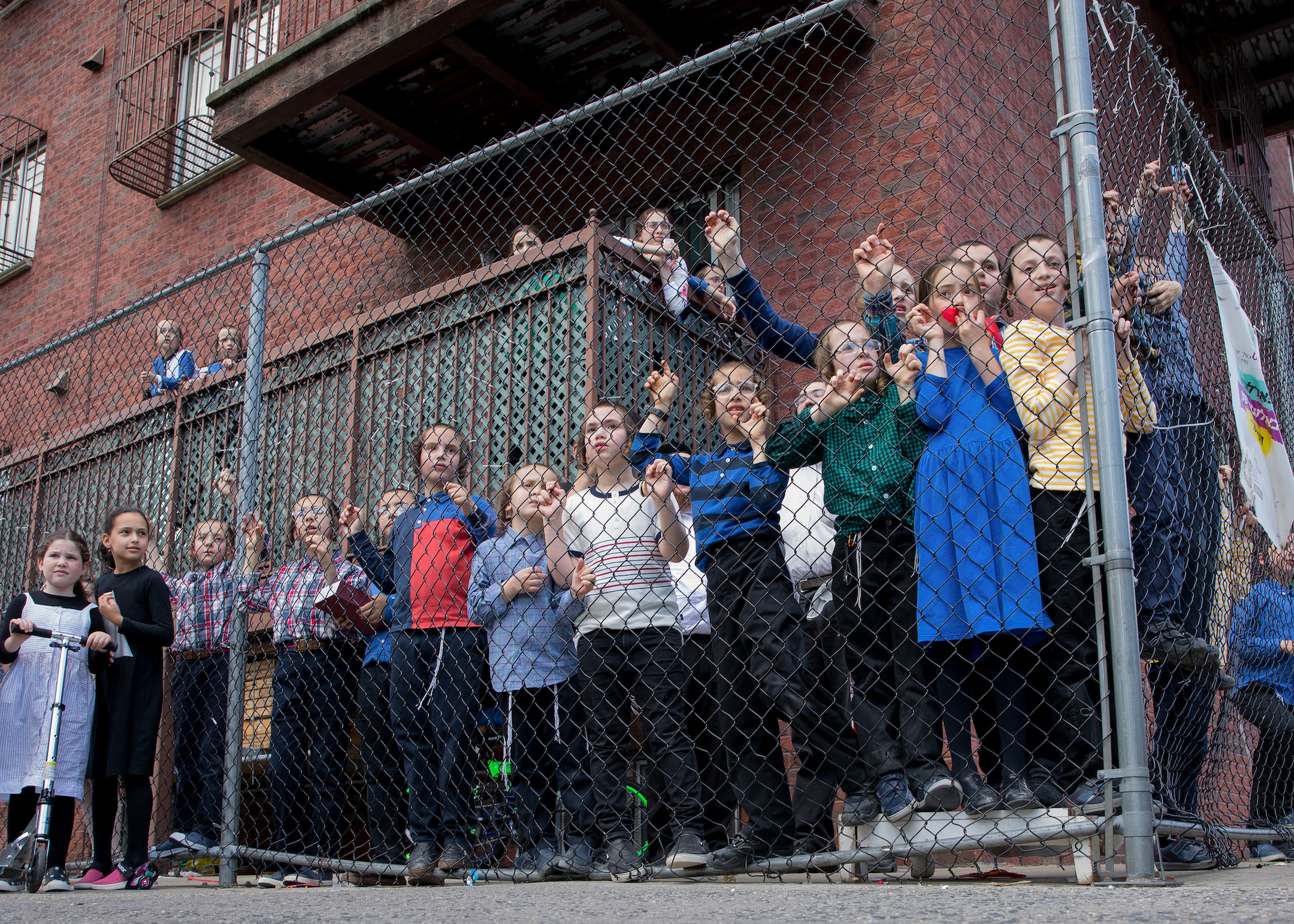
Children look on as a Black Lives Matter protest passes through Williamsburg, June 12, 2020. (Avi Kaye)
“More spread leads to closer possibility for some herd immunity,” said Dr. Gary Slutkin, an epidemiologist who worked with the World Health Organization for over 10 years on AIDS programs in Africa.
Slutkin and Joyner both warned that somewhere between 50% to 80% of the population would need to be immune from the disease in order to significantly mitigate the spread of the virus. The self-selection in the available antibody test results makes even the highest estimates only a risky guess, and there is also much that remains unknown about coronavirus antibodies, including whether they confer immunity, how long that immunity lasts and whether all people with immunity will get positive results.
Because of these questions, the prevailing advice among public health officials is that even people with antibodies should continue to wear masks and practice distancing.
But residents of some Orthodox neighborhoods say masks are an uncommon sight on streets that are bustling again, much as they were before the pandemic hit.
“It’s just taken as a given,” one Borough Park woman said of the idea that herd immunity is protecting the community. “I’m walking now and I don’t see anyone wearing a mask.”
Even some in the community who said they were initially wary about the early return to normalcy say they have become convinced that herd immunity had been established.
“Otherwise, how do you explain zero cases after months of packed shuls, open schools, huge weddings?” one Borough Park man asked.
“It’s not an all-or-none thing.”
As the summer warmed up, parts of the Hasidic community began the usual summer rituals. Day camps opened, albeit with temperature checks and other restrictions. Children packed off to sleepaway camps, this year in other states because New York is not allowing them to operate. Wedding halls reopened to large unmasked crowds. And parts of Brooklyn emptied out as families relocated to bungalow colonies in the mountains.
Chanie Apfelbaum, an Orthodox Instagram influencer from Brooklyn who moved to a bungalow for the summer, answered a question from a follower about whether people there were maintaining social distancing.
“It’s hard with the kids, more like impossible,” she wrote. “Most people here have had it and have antibodies.”
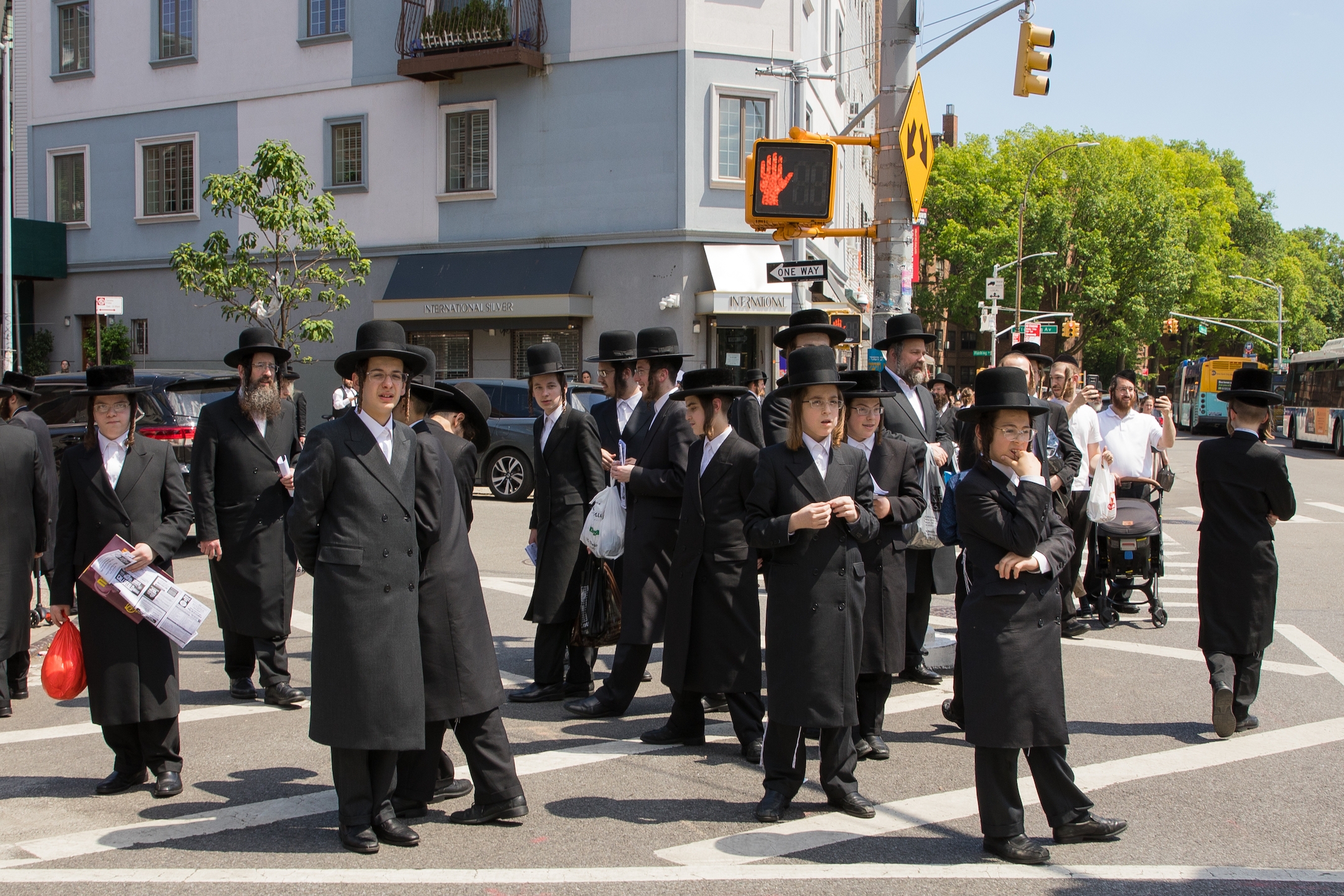
Williamsburg residents look on as protesters pass through their Brooklyn neighborhood, June 12, 2020. (Avi Kaye)
All of this is possible, one health care administrator in Borough Park said, because of the high early infection rate.
“The frum community had an advantage over everybody because they were mingling on Purim and all these other times,” he said. “It paid off.”
But while the results of this experiment in herd immunity may be encouraging, the cost at which they were acquired were steep.
“We have paid a terrible price in order to achieve this statistic that is more than double that of our neighbors in Flatbush, and certainly much more than that of New York City, or for that matter any other community in the country,” the Gedaliah Society wrote on May 20. “This high rate of past infection community wide will, with the help of Hashem, protect us from the virus reactivating and spreading again locally, which would thereby put the vulnerable at high risk.”
And behind the veil of normalcy — and the pain of loss — linger deep and unsettling questions about how safe the community really is.
One concern is that older people and others who are at higher risk may be continuing to isolate for fear of infecting themselves now that the communities have relaxed their restrictions.
Few of those people, who may have isolated themselves earlier and more fully than others, are likely to have antibodies.
“That’s the one thing that really scares me,” Hayum, the nurse practitioner, said. “That a lot of the people who were locked up for three months have no antibodies, which means if there is a second wave, they’re going to be very vulnerable.”
Glatt, the doctor and Orthodox rabbi, said the antibody positive rates could be inflated because those people are continuing to stay home.
“If all the people that are scared to go outside aren’t being tested, it’s going to be an artificially high number,” he said.
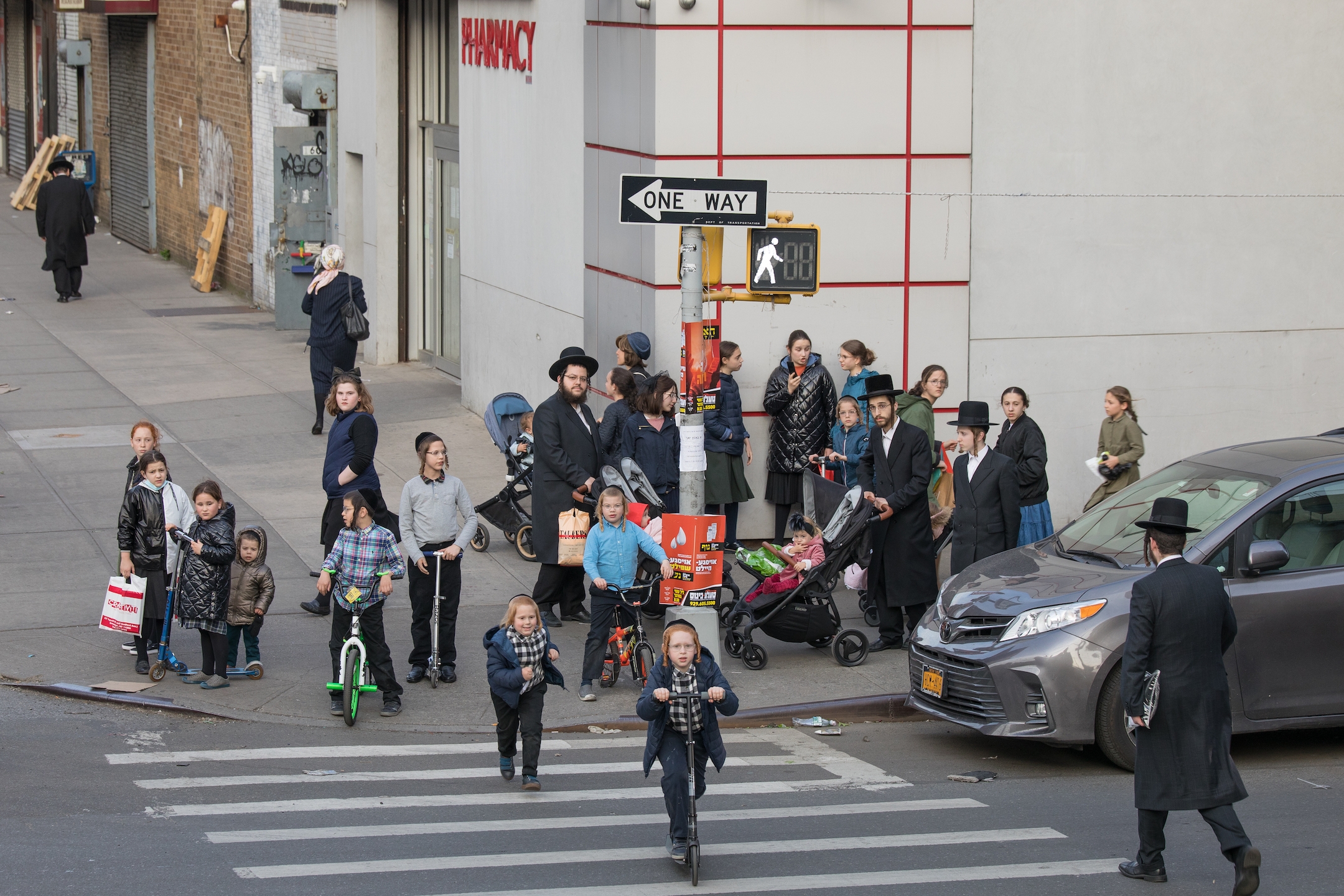
Families walk on the streets of Williamsburg, May 12, 2020. (Avi Kaye)
And as cases rocket upward elsewhere, there is also a growing risk that new cases could be introduced to the community while some swath of the local community remains susceptible to infection.
In Crown Heights, usually a site of pilgrimage for visitors from around the globe, local leaders are exhorting travelers to stay home.
“Those from other communities — please, avoid visiting Crown Heights for the time being. This is even more critical when involving those from the ‘hotspot’ states such as Florida and California, where cases are unfortunately surging,” the doctors wrote in a June 26 post that also urged against serving food after synagogue services. “Similarly, those currently living in Crown Heights are advised to not visit those hotspot states for the time being.”
By early July, the doctors’ fears had materialized. First, they had encountered a troubling case about a case of possible reinfection in the community. Then, earlier this week, someone who had traveled to one of those hot spots tested positive upon returning to Brooklyn.
“On the one hand, it is reassuring that it is not a case of ‘community spread,’ as it was picked up elsewhere,” the doctors wrote. “On the other hand, this is how community spread can begin.”
They urged continued caution and a 14-day quarantine for those traveling to areas with increasing infection numbers.
How the communities weather the summer camp and travel season could offer additional insights about how vulnerable they still are to the virus.
The more people in a community who have indicators of immunity, the slower the virus is likely to spread — even as members of the community could remain at risk. This makes Brooklyn’s Orthodox neighborhoods worth watching as the pandemic moves into its next phase.
“It’s not an all-or-none thing,” said Joyner, the Mayo Clinic anesthesiologist.
He added: “It’s going to make it harder for there to be a mega outbreak. But harder does not mean they’re not going to happen.”
All photos, except where noted otherwise, were provided by Avi Kaye. You can find him on Instagram at @hasidiminusa.
JTA has documented Jewish history in real-time for over a century. Keep our journalism strong by joining us in supporting independent, award-winning reporting.
